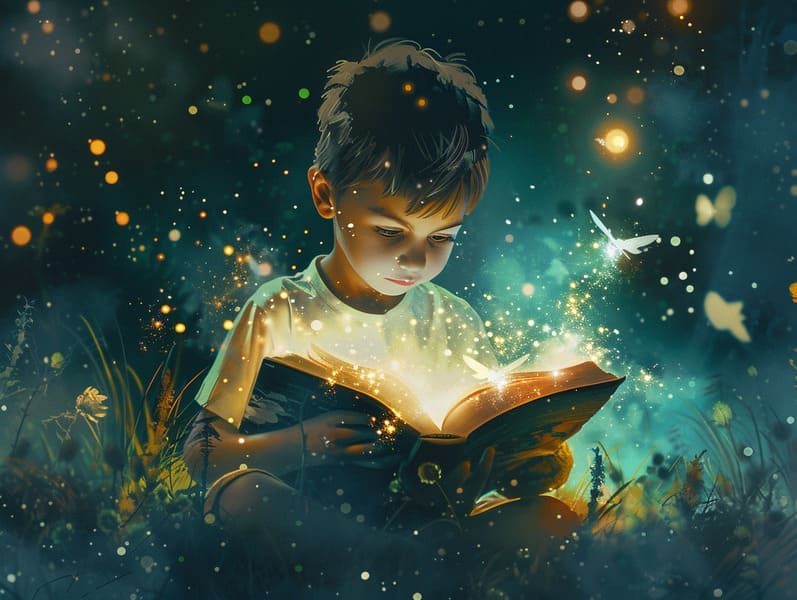
Old fairy tales have enduring presence. These narratives have been recounted from one generation to the next millennia before they were ever put on paper. They were born from a variety of backgrounds, including Asian traditions. They were initially shared among adults, often carrying themes and messages aligned with the societal norms and beliefs of the time.
The famous Grimm duo, the two Grimm brothers, were among the first to gather many of these beloved tales. Their volume, "Grimm's Story Collection," included classics like "The Little Glass Slipper," "Hansel and Grethel," and "The True Story of Snow White," which have since become classics in the world of children's fairy tales. Similarly, Hans Andersen's fantastical narratives, such as "The Story of the Little Mermaid," and "The Ugly Duckling," have gained the love worldwide, cementing their place in the pantheon of iconic fairy tales.
Despite their historical roots, traditional fairy tales remain as important as ever, especially as kids' bedtime tales. These enchanting tales are now available in multiple formats, including vividly illustrated books, charming animations, and online fairy tales.
Their lasting presence can be traced to several magical reasons:
Life Lessons: Traditional fairy tales often offer important moral lessons. Fairy tales like "The Boy Who Cried Wolf" teach the significance of being truthful, while "The Story of the Tortoise and the Hare" exemplify the virtues of steadfastness and modesty. These narratives offer the young clear distinctions between correct and incorrect, helping to shape their moral compass in a kind yet profound way.
Warmth and Understanding: Classic fairy tales frequently include protagonists facing trials and tribulations, encouraging readers to feel with their struggles and support their triumphs. For instance, "Beauty and Her Beast" shows us the virtue of seeing beyond looks to perceive the true character of a character, enhancing compassion and discernment.
Cultural Recognition: Many fairy tales are deeply ingrained in the cultural contexts from which they bloomed. Immersing in these stories can provide fascinating glimpses into different ways of life, fostering a sense of cultural respect and knowledge.
Inventiveness and Fantasy: The imaginative elements in ancient fairy tales—enchanted lands—promote children’s imaginations. These stories take readers to fantastical realms, generating imaginative thinking and a sense of marvel that endures a lifetime.
Traditional fairy tales are not only alluring but also educational. They function as fantastical tools in cultivating various mind and heart abilities in children. When fairy tales are told out loud, they foster language skills by teaching new word meanings and complex sentence structures. This practice also strengthens listening abilities and concentration, as kids track the narrative, anxious to see what happens next.
Furthermore, analyzing the themes and characters of timeless fairy tales can cultivate evaluative skills and reasoning skills. Young ones are guided to spot patterns, guess what will happen, and realize cause and effect. These talks also assist children express their thoughts and feelings, cultivating their emotional intelligence.
In today’s information age, the availability of digital fairy tales has made these stories more acquirable than ever. Web-based platforms and digital apps extend ample collections of classic fairy tales that can be looked at or listened through get more info anytime, anywhere. Fairy tales spoken are particularly well-received, providing an captivating way for little ones to relish these whimsical stories. Sound books and spoken videos carry characters and settings to life, often paired with magical audio effects and instrumentals that augment the story adventure.
The lasting allure of classic fairy tales lies in their ability to alter to present days while keeping hold of their fundamental ideas. Contemporary reimaginings of these stories often incorporate more diverse figures and modern settings, making them familiar to today’s audience. However, the essential messages of bravery, humanity, and honesty remain unchanged, continuing to touch readers of all ages.
Classic fairy tales also offer a sense of reassurance and knownness. They put forth a well-structured narrative with a apparent beginning, middle, and end, often concluding with the closure of conflicts and the triumph of virtue over corruption. This foreseeability can be encouraging for kids, showcasing a sense of consistency in an inconstant world.
Traditional fairy tales continue to delight and train new generations, maintaining their wonder and impact in modern society. As bedtime stories for kids, they serve a perfect blend of fantasy and learning, facilitating moral values, empathy, and creativity. The presence of digital fairy tales and the in demand status of fairy tales told out loud confirm that these timeless tales remain reachable to new generations.
By sustaining and releasing these narratives, we continue to pay tribute to the rich tapestry of inventiveness and cultural heritage. Whether you are viewing a colorful picture book, browsing a virtual collection, or hearing an narrated book, the delight of famous fairy tales is always within reach. These narratives teach us of the endless influence of stories and its ability to hold us together across eras and regions.
No matter if you are experiencing a artistically illustrated book, delving into a online collection, or listening through an read-aloud story, the allure of famous fairy tales is always within reach.
These fairy tales convey of the consistent power of storytelling and its ability to bring us together across epochs and places, forging a link that fascinates and enlightens alike.